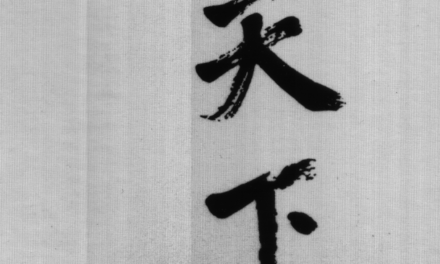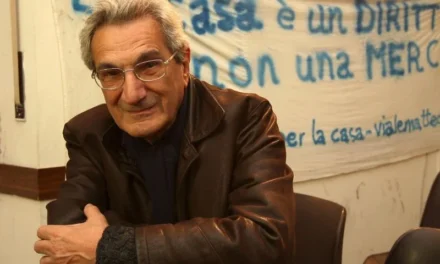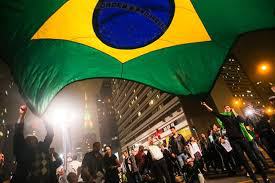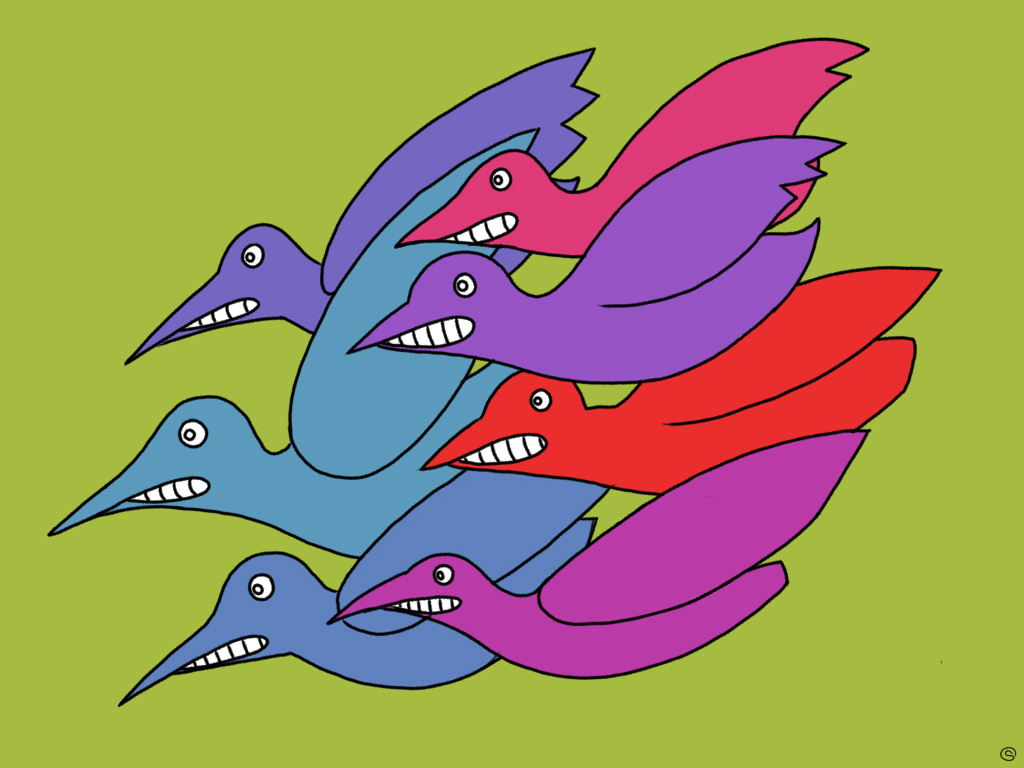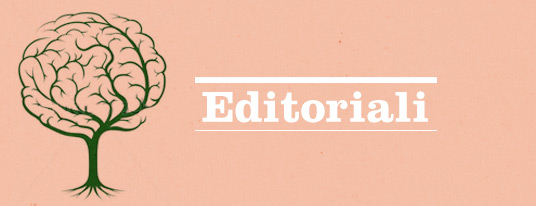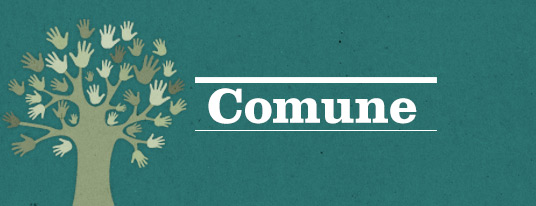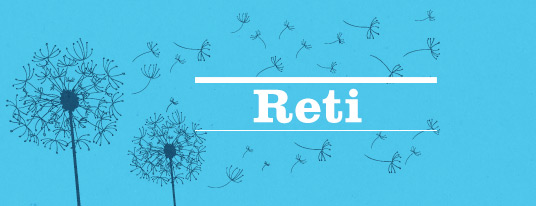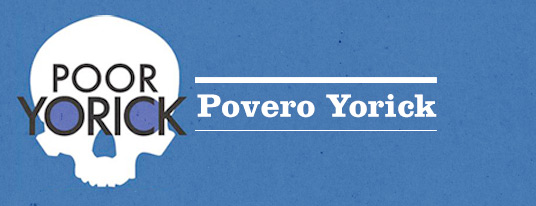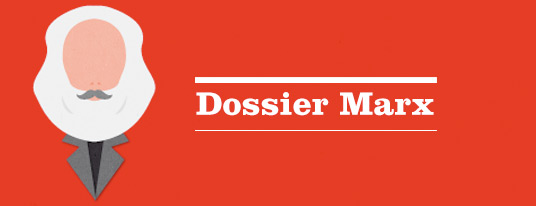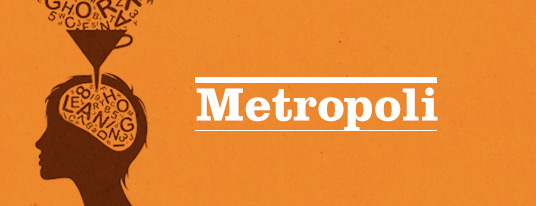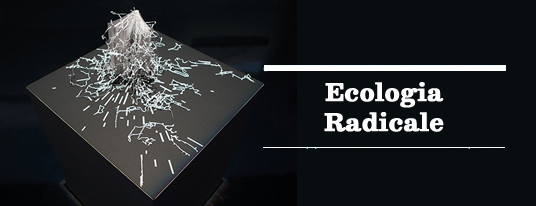di ILYA BUDRAITSKIS
Pubblichiamo nel Dossier Mondo quattro articoli in inglese che narrano la composizione delle lotte in Russia dal 2011 al 2013 e come esse si siano scontrate con la riforma dello Stato e delle strutture comunicative del Paese sotto la ferrea linea di Putin. Molto interessanti sono le piste che in questi articoli emergono relativamente alle nuove forme di produzione di soggettività che in queste lotte si sono date. Gli articoli sono stati pubblicati sulla rivista americana The South Atlantic Quarterly (113:1, Winter 2014) nella sezione Against the Day in un dossier comune dal titolo “Democracy Has Become Unmanageable!” The Russian Protests in a Global Context. [EuroNomade]
Protest and the Political Abstraction of “Fair Elections”
The protest movement of 2011–2012 quickly brought Russian politics, hith- erto isolated and limited, into an international arena, striking a chord with the events of the Arab Spring in Tunisia and Egypt, Occupy Wall Street in the United States, and demonstrations against “austerity measures” in Spain and Greece. Though each was focused on a different matter, these move- ments all marked the deepening crisis—both political and economic—of the ruling order. However, in Western Europe and the United States, these movements cast doubt on representative democracy as the ideology deter- mining forms of domination and political participation. In Russia, by con- trast, the previously passive and depoliticized social groups that made up the diverse composition of the Moscow protests united precisely around a demand for a return to purer procedures of representative democracy. A principled rejection of the current political choices was tied to the slogan “Fairness,” while the dubious tagline, “Democracy is a procedure,” became one of the most popular expressions among opposition leaders and journal- ists. People demanded a return of the very right to politics, but they refused to think about how that right might be realized meaningfully.
After two post-Soviet decades marked by the violence of “primitive accumulation,” the degradation and diffusion of the main classes of Soviet society, and the consolidation of power by a new elite, all the traditions of social solidarity were almost completely destroyed, and not one institution capable of expressing collective dissatisfaction remained. In these conditions only a political abstraction, a principle far removed from social reality, could become a unifying and mobilizing factor.
“Managed Democracy” and Its Discontents
If the demand for “real democracy” on the squares of Barcelona and Madrid challenged representative democracy, in Russia the demand for a “fair” representative system was directed against so-called managed democracy, a method the new post-Soviet elite used to regulate politics in the years of its rule.
In Russia’s managed democracy, all the institutions necessary for representative democracy—including the separation of powers, private media, a parliament, and a set of basic political parties—are technically present. However, none of them serves as part of a dynamic mechanism capable of self-regulation and reproduction. The elements of democracy do not work of their own accord but are quite openly controlled from above. The actual center that determines the results of future elections, the media coverage of given events, and the changes in the internal and external con- figurations of the political parties is located within the presidential admin- istration. The location of the center is not mandated by the constitution, and by a strange coincidence it occupies the very building that once housed the Central Committee of the Communist Party in the heart of Moscow. This managed democracy does not simply replace democratic politics, but it simulates democratic politics. And this simulation is as important to the government formed by managed democracy as the nontransparent meth- ods of decision making masked by this simulation.
Thus, Russia’s managed democracy represents something distinct from other well-known authoritarian models. As noted by Dmitri Furman, one of the sharpest and most discerning political analysts in Russia, “in con- trast to other authoritarian systems, power here is not grounded in the ‘phys- ical power’ of the army, as in military dictatorships, nor on an ancient tradi- tion, as in non-constitutional monarchies; the democratic camouflage in this system is a necessary and constituent feature” (Furman 2010: 11).
The post-Soviet ruling class’s particular model of hegemony was not based on the ideological inclusion of the majority in the institutions bolster- ing the political order. On the contrary, this model of hegemony emerged as a powerful and effective instrument for discrediting all forms of political participation. Elections were held only to inspire disgust for elections among the majority. The manifold official media successively worked to undermine the people’s trust.
The different organizations created by the presidential administration’s stratagems against the opposition, such as the notorious youth movement Nashi (Ours), in actuality were far removed from the type of conservative mobilization taking place from below. These expensive propagandistic proj- ects were supposed to reinforce people’s existing beliefs by providing exam- ples. This substitute for politics smoothly complemented the worldview that had gained traction after the shock therapy of the 1990s and the cementa- tion of the Putin consensus in the 2000s: at its core lay a deep conviction, grounded in personal traumatic experiences, that no shared interests could be realized with the help of the government or through the process of self-organization.
While reinforcing the harrowing political skepticism of the majority, managed democracy at the same time represented the interests of big busi- ness and different bureaucratic clans. The lower house of Parliament (the State Duma) and the upper house (the Federation Council) were filled with lobbyists, and seats were sold—even within the parliamentary parties— at prices known to many. It was easy for businesspeople to find places for themselves here: some saw parliamentary status as a transitional step toward new career heights, and others simply needed parliamentary immunity to distance themselves from their own criminal pasts.
The creators of this system legitimized it with lofty justifications. Thus, one of its main architects, Vladislav Surkov, who played a key role as deputy head of the presidential administration for many years, preferred to call it “sovereign democracy.” His terminology depended on the idea that the democratic experience of every country is rooted in its unique national polit- ical culture, prohibiting the blind imitation of foreign models. Performing the role of a sui generis public intellectual, Surkov argued in his many texts that the “incompleteness” of Russian democracy was linked to its youth, and for this reason, it had to bear traces of Russia’s despotic history (Surkov 2008). In actuality, the relationship between sovereignty and this managed democracy was quite different from that proposed by Surkov. Sovereignty
was not the source of this managed democracy; rather, a democratic experi- ence strictly limited from above exposed the population to a sovereignty whose source was the timeless elite that created Russian political culture. Russian sovereign democracy in this model turned out to be quite divorced from the historical moment of its constitution, when the people’s will to cre- ate a new order challenged autocracy and the dictatorship of the party. Sover- eignty was understood first and foremost as an affirmation of that which, regardless of its character, remains a source of power within a country and not beyond its borders. Democratic forms have value only to the extent that they enable this power and do not create impediments.
However, this conservative rationale, with its abundant use of quo- tations from Fyodor Dostoevsky and Ivan Ilyin, the Far Right ideologue of the White Russian emigration, obfuscates a much more recent origin of sovereignty.
A Brief Genealogy of Russian Parliamentarism
The real foundations of Russian sovereignty were laid in the beginning of the 1990s, when the colossal public property of the former Soviet Union was divided. Despite the chaos and uncontrolled violence that accompanied it, the privatization process in Russia initially proceeded within specific bound- aries and had a clearly expressed political direction. Foreign capital was almost completely barred from the redistribution of property, and the new capitalists were recruited from among the former leaders of the Komsomol (the official youth organization of the Communist Party during the Soviet period) and other socially active citizens. The new elite was created from above with decisive, quick, and cruel measures. One of the chief architects of privatization, Anatoly Chubais, who served as deputy prime minister in the early 1990s, stated that the goal of the whole process was the creation of a “new class of property owners” and that in itself “privatization was not a question of ideology or of some kind of abstract values; it was a question of the real daily political battle” (Chubais quoted in Ostrovsky 2004). The foun- dation of the capitalist elite went hand in hand with the foundation of a new political order and the securing of its supremacy.
Early in 1993, the conflict between Russian president Boris Yeltsin and the upper house of parliament (then called the Supreme Council) gained momentum. From the start the conflict had been more than an argument over the division of power between two branches of government; it was a key stage in the struggle to establish a new type of sovereignty. On September 21,
1993, acting on his own decree, Yeltsin dissolved the Supreme Council. In response, the council passed a resolution about the forfeiture of presidential authority. Between October 2 and 4, a short-lived but bloody and hard-fought civil war unfolded between the special police forces subordinate to Yelt- sin and the poorly organized, doomed supporters of the Supreme Council. During the war, several hundred people were killed and the White House— where the Supreme Council was then housed—was shelled by tanks. The result of the action was the establishment of a new constitution, which is still in place today.
Carl Schmitt observed that the irresolvable conflict of every represen- tative democracy is the discrepancy between the principle of identity of the people and the government and the actual realization of the will of the majority. The principle of a volonté générale, the general will or democratic form, always remains immutable, even as its content is constantly changing. And this content is generally unreliable and secondary in relation to its form, just as the “will of all” remains secondary to the general will. The democratic process, in this sense, is nothing other than the continuous education of its participants, who should see voting not as a mechanism for the realization of their own interests but as a triumph of the principle of the general will— even if it means that their interests are contradicted. The democratic subject becomes not the “people,” but the bearers of the principle, who can and ought to support it by any method. This arrangement, in Schmitt’s opinion, does not create significant barriers for the implementation of democracy, which is aided by barbarous violence over the majority (Schmitt 1988).
The new political elite that consolidated power after the collapse of the Soviet Union in 1991 enduringly assimilated this disciplinary function of democracy. The bearers of the “democratic principle” clearly wanted to teach the country, which had no historical experience of democracy, a lesson. Just as the market economy was to be implemented with the help of shock ther- apy, a radical method of treatment for the long-endured “illness” of a state- planned society, democracy could be adopted only with the aid of a political shock. The presidential side of the 1993 conflict, which gave itself the appel- lation “democratic forces,” clearly recognized the discrepancy between dem- ocratic form and content. That side was firmly convinced that it was neces- sary to suppress the latter in order to exercise the former.
And so Yeltsin, though he had not read Schmitt, nevertheless noted in his diary: “I understood that this was the only escape from the constitutional trap, when practically any of our actions can be declared unconstitutional. The president formally violates the Constitution, takes antidemocratic
measures, dissolves the Parliament—but only for the sake of the democracy and legality that will ultimately take root in the country” (Yeltsin 1994: 361). The representatives of the liberal intelligentsia likewise did not hold back during the caustic political moment; they called for increasingly repressive measures. For instance, well-known human rights activist Elena Bonner wrote, “The main mistake of Yeltsin and the true democrats [working] with him . . . turned out to be . . . their excessive, nearly fanatical, devotion to dem- ocratic institutions and to democratic power mechanisms in an undemo- cratic country” (quoted in Furman 2010: 64).
The shelling of the Russian Parliament became the best illustration that the spirit, rather than the letter, of democracy was to be consolidated, and the Parliament’s permanent humiliation became one of the founding principles of the new Constitution. According to this document, the presi- dent, regardless of the results of parliamentary elections, appoints the gov- ernment and can dissolve the Duma if it votes down the president’s candi- date for prime minister. Moreover, the president has the right to dissolve the Duma if it does not express confidence in the acting government within a week. With this new Constitution, the Russian Parliament became the most powerless and dependent organ of governmental power in the country. Even its building and budget are now overseen by the Presidential Property Man- agement Department.
Yeltsin’s reelection in 1996 firmly established the new nature of the president’s office as the powerful hand guiding the “backward” and “unpre- pared” society to the market and to democracy. Unpopular at the beginning of the election campaign, Yeltsin built his strategy on the open assertion that there were no alternatives. Even when he and the Communist Party candi- date Gennady Zyuganov went to a second round of elections, the majority of voters already knew that Yeltsin would win in any case—either with a greater number of votes or with the help of a new state of emergency. This aggres- sive presidential campaign proved to be the last in post-Soviet history in which the results were not fully obvious to everyone in advance. Exactly at this moment, the principle of consensus around one figure in the ruling elite was established: de facto, the elections took the form of a plebiscite. The president, as the source of decisions, became the authority at the edges of the political battle. And Parliament, deprived of the ability to pass its own deci- sions independently, became practically synonymous with “politics” for the majority of the population.
In the elections for the first State Duma in December 1993, the clear victory (22.9 percent) went to Vladimir Zhirinovsky’s Liberal Democratic Party—a semicriminal, unstable coalition around a cynical and unambi- tious populist prepared to play his role obediently within the framework of the regime’s managed democracy. Like the successes of the Communist Party in the following elections, Zhirinovsky’s popularity pointed both to the population’s displaced discontent with the political administration and its contempt for the State Duma, which looked more like an arena for a pseudo- political spectacle than a place where real decisions could be made.
The Social Foundation of Managed Democracy
Despite the hopes of radical leftists, the stabilization of Russian capitalism in the Putin era did not trigger the reproduction of the classical clashes between wage workers and the new bourgeoisie. Russian society’s new social com- position took shape in relation to the traumatic experiences of shock ther- apy and the mass deindustrialization of the 1990s, when almost half of Soviet workers lost their jobs and thus their previous class identity (by 1999 the number of industrial workers had fallen 38 percent from 1990) (Trushkov 2002). The limited growth of the new independent trade unions, which were organized by several powerful, hard-driving strikes in the mid- dle of the 2000s, was almost entirely connected with a specific sector of the Russian economy—with new discrete enterprises created from scratch by transnational corporations (Budraitskis 2006). These initiatives, how- ever, looked like excesses in the context of the passive masses of workers in the large, old Soviet enterprises and the public sector. Despite the nation- wide resonance of such events as the 2007 four-week strike at a Ford fac- tory outside Saint Petersburg, there was not one strike of solidarity in Rus- sia for all the economic growth that occurred during the decade.1
The demonstrations against the so-called monetization of benefits in the winter of 2005 were the only example of a nationwide social movement in the 2000s. As a result of aggressive efforts by the government to hasten the privatization of the public sector and the so-called natural monopolies (energy, transport, and so on), millions of the country’s residents (pension- ers first and foremost) simultaneously lost their access to free (subsidized) transport services and housing subsidies. Unexpectedly for the ruling elite, which had bargained that the population would “adapt” to a decreasing stan- dard of living during the years of market reform, spontaneous protests took over nearly all the large cities in the country (Kleman et al. 2010: 112–48). A demand to abolish the new reform united a range of disparate groups— including pensioners, large families, invalids, soldiers, and a few categories of civil servants—that were immediately affected by monetization of bene- fits. The reform thus became a catalyst for general social discontent.
The parliamentary parties (including the Communist Party of the Russian Federation) and the “official” trade unions were caught off guard by the quickly established movement and thus did not play a significant role in either the organization of the protests or their political representation. Vladimir Putin, whose popularity took a blow, quickly found a solution: he transferred responsibility for the unsuccessful reform to several ministers and essentially abolished its provisions. The excess profits from oil exports, which were being funneled into special government accounts, made it pos- sible to supplement the extrabudgetary funds and to extinguish all the hot- beds of social tension. The local “coordinated councils of united action” that were formed in the groundswell of the protests against monetization were not able to build up a regular nationwide network in the period that followed. Some of these councils dispersed, while others concentrated on local conflicts, primarily in housing services.
The activists who began appearing in the 2000s made up a minority that could act only on the level of individual enterprises, neighborhoods, and smaller cities. A veritable abyss lay between the passive mass discontent and local activist praxes. Polls found respondents highly ready to take part in strikes or protest actions. Thus in 2005, following a wave of protests against benefits monetization, up to 57 percent of those polled spoke about wanting to take part, but only 2 percent actually did so. In 2008, 27 percent of polled workers expressed a desire to take part in the strikes, and 55 percent spoke approvingly about the strikers, despite the fact that the records show only eleven strikes taking place during that period in the whole country (Kleman et al. 2010: 42, 57).2
Neoliberalism became not only the unquestioned creed guiding the politics of the ruling elite, but it also served as the organic ideology of a soci- ety in which brutal competition and the drive to capitalize on one’s own social position had been transformed into “material practice,” to use Louis Althusser’s term (Althusser 1971). The people’s sharp sense of alienation from the state worked in concert with a general readiness to put up with the lack of personal rights.
Some liberal researchers described the condition of Russian society in the 2000s as a consequence of post-totalitarian syndrome, a peculiar variety of the “escape from freedom” model in which the majority of the population turned out to be unprepared for independent decision making in the new
market economy and was ready once again to shift the responsibility for its own fate to the state (Gudkov and Dubin 2007: 8–64). This contention, which revealed more about the worldview of liberals than about the actual state of affairs, is usually linked, in those intellectual circles, to a perceived dichotomy between the 1990s and the 2000s, the eras of Yeltsin and Putin. The Putin era was characterized as a “strike back” on the part of the gov- ernment bureaucracy, which once again aspired to dominate economic and social life. However, another important component of managed or sovereign democracy was to define the new epoch, associated with the restoration of the state, against the collapse and degradation of the wild 1990s.
In essence, however, the logic of privatization simply expanded to the machinery of the state itself and to its role in economics and society. In Violent Entrepreneurs Vadim Volkov calls the period of transition from Yelt- sin to Putin beginning in 1999 “the fourth stage of privatization”: the state, replacing the mafia in the specific market of “protection services” in the previous years, began actively taking its place (Volkov 2012: 298). That pro- cess did not restore the state to the position of a regulating institution above society, but instead transformed the state’s machinery and power struc- tures into an active market subject. The state did not regain control over the market but rather rapidly became a part of it.
In the economic sphere, this meant that the practical right to prop- erty was now guaranteed not through an informal agreement with private providers of protection services but exclusively through the assistance of the police and other power structures. As a result of the “fourth phase of priva- tization,” hundreds of conflicts involving government departments ended with redistribution in favor of the property owners who had the closest ties with the police, special forces, or courts. (In Russia the courts have their own independent power structure.)
On the level of social politics, Putin’s Russia began to resemble a pecu- liar variant of what David Harvey calls the “neoliberal state”: that is, the nearly total reduction of the state as an instrument for redistributing social welfare in favor of its exclusive reinforcement as an instrument supporting open class rule. The “restoration of class power” meant that the state grew as a bureaucratic machine, continuously consolidating power in order to wage politics that openly go against the interests of the majority. As Harvey emphasizes, this kind of frontal attack necessitates a new type of hegemony based on the consolidation of a ruling class ready for open confrontation (Harvey 2007: 64–87).
Putin’s authoritarianism was founded in a firm consensus among the ruling elite that the methods and results of privatization were unquestion- able; the elite hurried to transform this position into the key thesis of silent social agreement about the political regime. It is worth noting that some Rus- sian and Western leftists (e.g., Gusev 2012; and Jones 2000) mistakenly char- acterized Putin’s regime as “Bonapartist,” referring to its repressive actions against individual oligarchs (such as Mikhail Khodorkovsky) and its tendency toward populist rhetoric. But, in fact, the type of neoliberal consensus that was settling on the ruins of society did not intend to achieve the classical Bonapartist relative autonomy of the government from the interests of the ruling class or to maneuver between the low and the high, let alone to appeal directly for mass support through the plebiscite. On the contrary, the Russian version of the “neoliberal state” to an even greater extent than American or Western European models was inextricably intertwined with the ruling class, of which the government bureaucracy itself became an integral part.
Such a state, whose repressive power grows proportionally as the economy is deregularized, feels all the more assured as a regime of con- tinual political advance. The corpus of anti-extremist laws that proliferated throughout the 2000s, the strengthening of the special forces and special police departments, and the endless and even more structurally necessary antiterrorist operations in the Northern Caucasus, all stemmed from the fact that a permanent state of emergency had become the principal founda- tion of the ruling elite’s sovereignty.
Even the very term “power” (vlast), which participants in the opposi- tion movement of the 2000s used to define their opponents, suggests as concisely as possible the indivisible interconnections between the economic corporate class, antisocial politics, police violence, and authoritarian mea- sures that make up the total composition of the governing post-Soviet order. One can come to terms with power and find a place in the existing relations; one can endure a dull and politically unexpressed discontent; or one can take on an active position of active resistance. But power’s totality inescapably leads the smallest conflict to the level of a conflict with the system as a whole.
Democracy Becomes Unmanageable
On September 24, 2011, at the United Russia Party congress, Dmitry Medve- dev proposed putting Putin forward for a third presidential term in the March 2012 elections. Even though many had predicted this turn of events, Putin’s decision to run looked like an open provocation, even within the framework of managed democracy. One of the foundations of managed democracy’s sta- bility and reproducibility was adherence to the 1993 Constitution, the letter of which banned anyone from serving in a higher post for more than two terms in a row and the spirit of which intended to keep the top-heavy presidential power from overreliance on one concrete personality. If the letter of the law was formally honored—since Putin had given up his place in the Kremlin to Medvedev after the end of his first two terms in 2008, his return did not con- tradict the law—an obvious problem arose in relation to the spirit.
When Boris Yeltsin retired in 1999 after naming Putin his heir, he established a tradition of handing over power through an elite consensus around a chosen successor. This mechanism not only made it possible to preserve the imitation of democratic procedures necessary to the system but also ensured that various groups within the ruling class remained equidis- tant from power. Even in the 1990s, it was clear that to break this order in hopes of securing personal power meant to risk an abrupt reversal vis-à-vis the influences of those power structures (or clans within those structures), by means of which the president could be bound by a power contrary to the law. The Russian Constitution itself reflected not a real balance between the branches of government or societal forces but the consolidated opinions of the ruling class, an established model of its political hegemony after the cri- sis of 1993.
Putin’s return meant that the future of that political system was now explicitly tied to his person; the logic of that decision implied that the next two presidential terms were now inevitably decided. In other words, Putin’s reign now must continue until the year 2024 (since the presidential term was extended from four to six years in 2008).
This event, however, did not inspire serious protests but only increased the general pessimistic indifference and depression of the middle class, whose representatives began to speak ever more frequently about the lack of perspective in the country and about emigration. Putin’s new term would have probably gone through without serious opposition from below had the decision demanded approval only through a direct plebiscite. But the system of managed democracy contained an essential element of “complicated poli- tics,” distinguishing it from direct authoritarian rule. The key mediating fac- tor of this complication was the Russian Parliament.
The tradition established through years of managed democracy pre- ferred a sequential relationship between the elections to the Duma and the presidential elections: the first always took place in December and preceded the second, which took place in March. The parliamentary elections in that particular cycle were a necessary step, revealing fully Parliament’s status as a mere simulation of politics. In keeping with the scenario continuously taking place, at first the ruling party would win the repellent speculative fight, and then, already as a form of triumphant legitimization, the president would affirm his rightful power above even the political sphere, and above society as a whole. And if the first part of the cycle was supposed to confirm the discredited and marginalized role of civic political participation in Rus- sian society, the second underscored the autonomy of that suspicious partici- pation from the actual consummation of sovereign power.
United Russia, defined as the “party of power” among media, soci- ety, and the broader political field, fulfilled an important function in that scheme. That structure, which is hard to relate even to the typical electoral parties, served as a barometer of loyalty to the bureaucracy and allied corpo- rate business interests, as well as their ability to support the type of hege- mony characteristic of Russian capitalism. The absolute victory guaranteed in the parliamentary elections contained an affirmation of fidelity to the regional elites, who answered for the “correct” distribution of votes in their areas, as well as the readiness of large and midsized businesses to supply financial support, guaranteeing any future advantages with government bod- ies. The United Russia election campaign also included a peculiar oath of loyalty from the entire public sector; those who served it, from the teach- ers to those in housing services, had to participate in the campaigning and work of local election commissions and, if need be, to “correct” the election results. In this manner, some degree of fraud was included in this model from the start. Hence, in the 2007 elections, when United Russia set a rec- ord with 64.3 percent of the vote and 315 of 450 corresponding deputy seats, inspectors reported numerous infractions.
The role of the other parties included in the roster of managed democ- racy remained quite minor. In the 2011 Russian elections, only seven politi- cal parties retained the official status that allowed them to issue the nation- wide list for participating in the elections—and only three of those had seri- ous chances of meeting the 7 percent voting threshold necessary to form a parliamentary group. The composition of these parties did not change for many years and represented the result of a painstaking selection process through the president’s administration. Each party had to represent a spe- cific sector of passive social discontent and then to compose a worthy part to play in the false orchestra of the coming Duma “symphony.” And so, Communists and the left-of-center Just Russia group represented the pole of social protest, granting them a monopoly on the (nonthreatening) critique of neoliberal governmental policy (although under no circumstances, of the president personally). Zhirinovsky’s Liberal Democratic Party drew the votes of cynics, whose sole motive was to reduce to absurdity the senseless and boring parliamentary debates.
Absenteeism, one of the central problems of Western representative democracies, in Russia was completely organic to the political mechanism of managed democracy. The 60 percent voter turnout at the parliamentary elections reflected not only the real activity of the voters but also the mobi- lization of independent groups brought out to the elections (for example, all those serving the public sector or military). In order to achieve the pre- determined result, the authorities were invested in having a high percentage of participation from those groups of voters whose choice was most pre- dictable. However, the circumstance of these electoral procedures in Rus- sia, which had to reinforce the political alienation of the absolute majority of the population from participation in politics, turned out to be the politi- cal school that enabled a significant portion of the voters to study the sys- tem’s weak points.
In the summer of 2011, even before Putin’s run for a third presiden- tial term was made public, the popular opposition figure Aleksei Navalny called in his blog for people to vote for “any party at all other than United Russia” (Navalny 2011). That strategy was principally directed toward those who found no real choice among the meager offerings of parties repre- sented in the electoral bulletin. From the start, the idea of voting against United Russia suggested that the main political challenge of the elections was to wreck the symbolic victory of the ruling party, which was anticipat- ing the triumph of its candidate in the following presidential elections.
Navalny only voiced what millions of people understood intuitively. Many began to support practically any candidate who had come forward as an opponent to the party of power. The steadily sinking ratings of United Russia drove the entire cumbersome loyalty machine, from bottom up, to work at a feverish pace to meet the task set from above. Governors were afraid that results below 50 percent for the ruling party in their regions would lead to lowered federal subsidies or might cost them their positions entirely. City and regional powers fearfully awaited reprimands from the governors. School principals, responsible for the work of local election com- missions, hurriedly tried to lead their collectives away from the danger of cutbacks in positions and salaries. The entire “vertical of power” (the cen- tralization of power shared between federal and regional governments), which the parliamentary elections had seen earlier as merely the affirmation of unspoken obligations and relations of dependence, now became a key political test.
In the end, the question of the future Duma served to focus the passive mass discontent that not only could find its political expression but also, out- side the parameters of the electoral process, could become the general foun- dation for active protest. Thousands of citizen activists, until then involved in disparate local initiatives, small political groups, and nongovernmen- tal organizations, purposefully signed up as independent voting observers in the fall of 2011. On election day (December 4, 2011), the numerous video materials and witness accounts of these groups brought the facts of unprec- edented infractions all across the country to a large audience.
The next day, when the official results were announced (49.3 per- cent for United Russia), thousands of people came out to the center of Mos- cow to protest. Even though the parliamentary parties whose votes had been stolen directly (and the first among them, the Communist Party of the Rus- sian Federation) nearly immediately accepted the election results and took up their places in the new Parliament, the demand for “fair elections” became the unifying call across the most varied street demonstrations.
Many observers, early in the mass protests, began to make active com- parisons between the Russian phenomenon and the “color revolutions” of the 2000s in Eastern Europe and in other post-Soviet places. And in fact, the changes of power in Serbia, Ukraine, and Georgia all came about as a result of oppositions challenging election results and through street mobilizations that demanded the re-examination of those results. The general dissatisfac- tion with the ruling regimes that had been growing for years found expres- sion in the public questioning of election results. However, the repeated sce- narios behind the “color revolutions” presupposed a split inside the elite in addition to the street protests—in which the latter never played an indepen- dent role and served as the main argument in the closed negotiations about the redistribution of power. In all these cases, the mass protests, frequently independent of the common participants’ real motives, transformed into manifestations of political support for the opposition leaders (themselves members of these elites) bidding for power.
Even at the start of the 2000s, the Russian liberal opposition lost its place in the system of managed democracy. The overwhelming majority of its leaders came from Yeltsin’s retinue, as former or current experts on gov- ernment structures or representatives of the younger generation, inclined to take their places in the existing political system. Just like the ruling group, they questioned neither the results of 1990s privatization nor the regime’s political foundations, which had been secured by the legislation of the early 1990s and the 1993 Constitution. Their political expectations during the entire Putin era were limited at first to dreams of repeating the color revolution scenario, and then by the more humble aspiration to liberalize the system. The rise of street protests in December 2011 proved no less unex- pected for this opposition than for members of the presidential adminis- tration, who to the very last moment smugly presumed their continued control of the situation.
The street protests in Russia were in no way connected to the deep schism in the ruling class. Those lines of separation, which had evidently already existed between the various political forces surrounding Putin and Medvedev, never went so far as to engage in the open conflict that served such an important role in the mass mobilizations.
Urgent Issues of the New Political Reality
During the brief but rowdy history of the new Russian protest movement, which took shape between December 2011 and June 2012, liberal leaders attempted to become the political “voice” of that spontaneous movement, which was directed against the system of managed democracy and lacked any common alternative program. The bewilderment that many felt in the face of the movement’s political and social cacophony—open neoliberals took part in some demonstrations, critiquing the government for increasing budgetary expenses; the extreme right wing participated in the same demonstrations, suspecting a plot to populate the major Russian cities with migrants from central Asia; and leftists and anarchists came out against racism and exploita- tion in the very same streets—reflected the confused political consciousness of the majority of its participants, united only by the shared sense of alien- ation from the possibility of influencing one’s own life. The movement’s slo- gan, “For fair elections,” was the right strategy, capable of activating the inter- nal contradictions of the political system and of becoming a rallying point for a disintegrated society. This slogan not only did not suggest a unifying pro- gram for making radical changes, but as a strategy, it turned out to be limited to a specific political moment, as well as to the socially geographic active minority of the large cities (primarily Moscow and Saint Petersburg).
At the same time, regardless of the fact that through a serious expen- diture of forces, the ruling elite successfully “normalized” the situation on a surface level and pushed its plans through, ensuring Putin’s third term, the political system of managed democracy had been dealt a fatal blow. Not one of its constituent parts is capable of continuing to function as before. United Russia, finally discredited in the eyes of a significant part of the electorate, can no longer ensure a triumphant majority of votes in nationwide elections. In 2012 and 2013, the party machine has been coming apart at the seams, with prominent functionaries abdicating from their positions one by one and attempting to find work in other governing structures. Putin meanwhile openly manages the creation of the parallel United Russia political monster, the All-Russia People’s Front, in which he is now ready to invest his own, and thus far still sufficiently high, personal political capital.
During 2012 and 2013, the Russian Parliament committed a record number of odious repressive acts, from raising the fines for participation in “unsanctioned” demonstrations and imposing harsh limits on NGOs, to the darkly absurd laws against “offending the rights of believers” and “homo- sexual propaganda.” Thanks to the majority established in the previous year, Parliament also pushed through Russia’s entry into the World Trade Organization and passed the neoliberal law on educational reform. That aside, and for the first time in the history of Russian parliamentarism, six deputies—mainly from United Russia—were stripped of their positions within a year (most of them were major businesspeople who hid their prof- its and property from tax authorities and illegally continued to work in commercial activities).
Surkov, whose name until recently was considered a synonym for the entire system of managed democracy, removed himself from posts in the presidential administration and cabinet. The clumsy machine of open repression replaced the more complexly balanced system for managing political processes. The Investigative Committee of Russia—a structure created in 2011, which possesses enormous authority and is subject to the president personally—plays an increasingly important role.
Managed democracy seems to have been left behind. Despite the vis- ible return to order and the decline in street activism, Russia has already entered a new political period. Against the backdrop of the expected eco- nomic stagnation, the characteristic traits of this new era most likely will include growing political unmanageability, increasing and unsystematic brutality from the ruling class, and the aggravation of the entire array of contradictions that led tens of thousands to the streets in December 2011. The epoch of managed democracy leaves a problematic legacy—the Rus- sian Parliament and discredited elections, which might still play an impor- tant role in the birth of authentic politics from below.
—Translated by Marijeta Bozovic and Katharine Holt
Notes
1 The history of the Russian workers’ movement in the 1990s is beyond the scope of this article. During that decade, dozens of collectives opposed privatization and reconstruc-
Budraitskis • The Weakest Link of Managed Democracy 185
tion measures, and in the summer of 1998, the “rail-track war” was initiated by the mining unions. In this protest, strikes were held at the largest railroad arteries of the country, and strikers demanded reimbursement of the salaries owed to them.
2 It is important to note that the enumerated given official Russian statistics usually undervalue the real number of strikes, so that they count only those that took place “legally,” that is in accordance with the fairly difficult list of demands stipulated by Russian labor laws.
References
Althusser, Louis. 1971. Lenin and Philosophy, and Other Essays. Translated by Ben Brewster. New York: Monthly Review Press.
Budraitskis, Ilya. 2006. “Korporativnye predpriiatiia v Rossii I vozrozhdeniie profsoiuzov” (“Corporate Enterprises in Russia and the Revival of the Trade Unions”). Neprikosno- vennyi Zapas, nos. 4–5: 48–49.
Furman, Dmitrii. 2010. Dvizhenie po spirali: Rossiiskaia politicheskaia sistema v riadu drugikh system (Spiral Motion: The Russian Political System alongside Other Political Systems). Moscow: Ves mir.
Gudkov, Lev, and Boris Dubin. 2007. “Post-totalitarian Syndrome: ‘Managed Democracy’ and Mass Apathy.” In Pathways of Russian Post-Communism, edited by M. Lippman and A. Ryabov, 8–64. Moscow: Carnegie Center.
Gusev, Alexei. 2012. “The Return of the Russian Revolution: Nature of and Perspectives on the Wave of Social Protest in Russia.” New Politics, 14, no. 1. http://newpol.org/content /return-russian-revolution-nature-and-perspectives-wave-social-protest-russia.
Harvey, David. 2007. A Brief History of Neoliberalism. Oxford: Oxford University Press. Jones, Rob. 2000. “Putin’s Putsch.” Socialism Today, no. 45. www.socialismtoday.org/45/
putin.html.
Kleman, Carine, et al. 2010. Ot obyvatelei k aktivistam. Zarozhadioshieisia sotsial’nye dvizheniia
v sovremennoi Rossii (From Philistines to Activists: Emerging Social Movements in Contem-
porary Russia). Moscow: Tri kvadrata.
Navalny, Alexei. 2011. “For Any Party, against United Russia.” Blog, July 6. http://navalny
.livejournal.com/603104.html.
Ostrovsky, Arkady. 2004. “Father to the Oligarchs.” Financial Times, November 13. Schmitt, Carl. 1988. The Crisis of Parliamentary Democracy, translated by Ellen Kennedy.
Cambridge, MA: MIT Press.
Surkov, Vladislav. 2008. Teksty 1997–2007. Stat’i i vystupleniia (Texts, 1997–2007: Contribu-
tions and Speeches). Moscow: Evropa.
Trushkov, Viktor. 2002. “Sovremennyi rabochii klass Rossii v zerkale statistiki” (“Contem-
porary Working Class in the Mirror of Official Statistics”). Sotsiologicheskie Issledova-
niia, no. 2.
Volkov, Vadim. 2012. Silovoe predprinimatel’stvo XXI vek. Ekonomiko-sotsiologicheskii analiz
(Violent Entrepreneurship in the Twenty-first Century: Socioeconomic Analysis). Saint
Petersburg: Izdatel’stvo Evropeiskogo universiteta.
Yeltsin, Boris. 1994. Zapiski prezidenta (President’s Notes). Moscow: Ogonek. Accessed via
www.yeltsin.ru/upload/iblock/fa7/zapiski_prezidenta.pdf.


